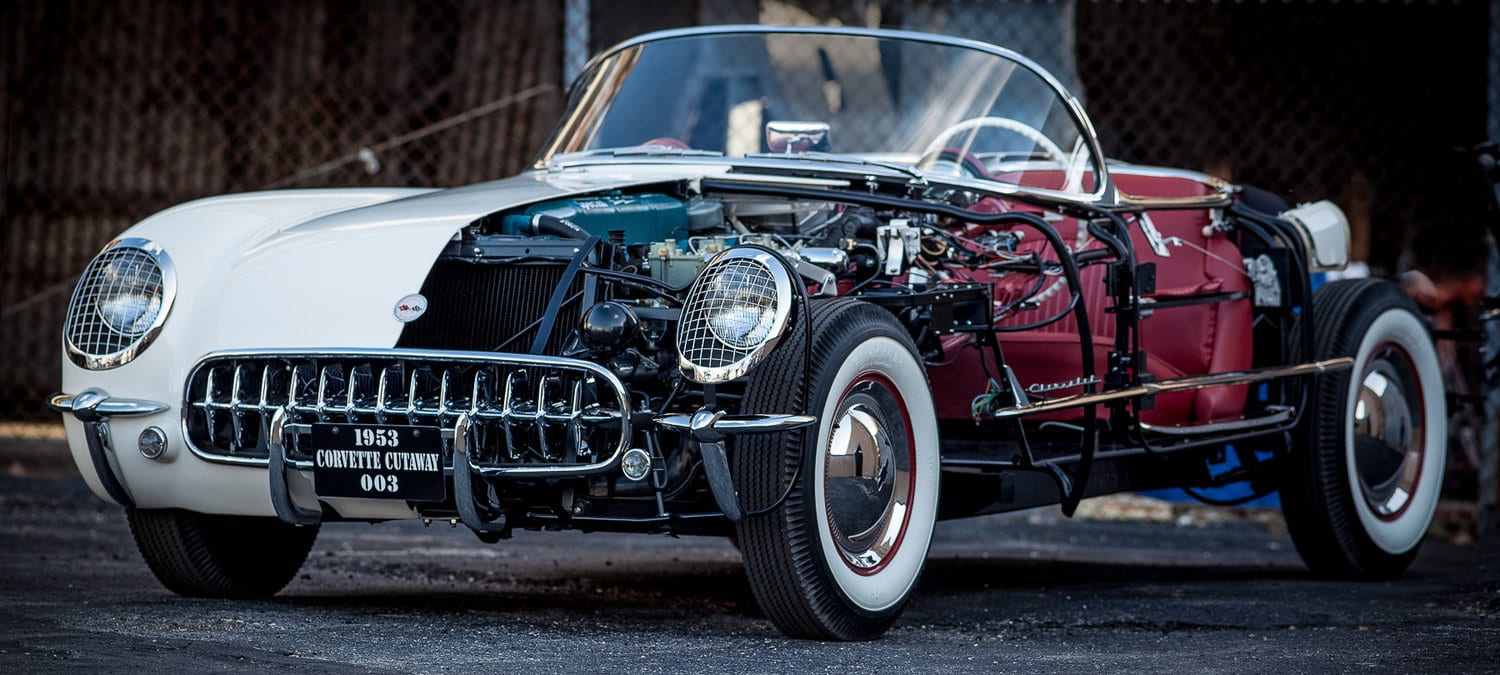Barrett-Jackson will be selling this 1969 Chevrolet Camaro RS/SS “Cutaway” Coupe at their Scottsdale auction in January. We’ve seen it on social media and it’s gotten a lot of attention so it’s worthy of being the first Scottsdale 2022 car we discuss.
This is one of two cutaway cars that Chevrolet displayed on the Motorama in 1968 to promote the new ’69 Camaro and this is where it gets interesting. Aside from the fact that the car is quite literally in pieces, it features the front end of a six-cylinder base model ’69 Camaro along with the front end for an RS/SS 350 model.
These different front ends were designed to allow the easy changing of which one was displayed – as simple as pushing a button. When the button was pushed the body of the car would rise up and the turn tables that seated the front ends would rotate and switch from one to the other.
Generally speaking the majority of the Camaro’s body is in its original condition – at least original to when the whole display was created. A part of that originality is the lack of doors – a decision that was made to help the public at Motorama get a better look inside the new Camaro.
The two engines were originally equipped with an electric motor that would allow the public to see the movement of the engine, but as of now the engines sit motionless. We should note that the six-cylinder engine is not the original but it was built with NOS parts after a prior owner got rid of the original one many years back.
The thing that we find interesting about this car isn’t so much the two engines – although that’s a neat trick. Rather, we’re intrigued by the interest that this car is expected to garner in Scottsdale following some other cutaway cars that have changed hands at auction in recent years.
Previous Cutaway Cars Sold
RM Sotheby’s – before it was RM Sotheby’s – sold a 1939 Pontiac Deluxe Six, known as the “Ghost Car” that was built out of plexiglass in 2011 for $308,000. That car was originally constructed for the 1939 World’s Fair in New York. Sure, an average ’39 Pontiac might not be the most interesting car, but this one caught a lot of eyes and justifiably so. It wasn’t exactly a cutaway, but it served the same basic purpose so we’re counting it here. More recently, in 2018 a 1965 Corvette was sold by Barrett-Jackson for $1.1 million.
That Corvette was used by GM and Chevrolet as a show car with a body that would raise two feet above the chassis, allowing for a better view of the underpinnings of the Corvette. It featured some unique exterior finishes and different paints that highlighted the areas of the car Chevrolet really wanted to show off. It didn’t run, but to make up for it there were plexiglass panels in the transmission and cutaways showing the inner workings of the combustion cylinders. These cutaway examples are so popular that the National Corvette Museum even displays three cutaway Corvettes that were completed by noted Corvette-expert Kevin Mackay.
So cutaway cars are of great interest to collectors and museums, but can you go too far with it? Volkswagen pushed the limit with its 1969 Beetle Wedding car, one of twenty of so wrought iron Beetles built by a welder and blacksmith in Mexico City, Raphael Esparza Prieto. He created the car as a display on top of a Volkswagen parts shop but then Prieto was asked to build two drivable versions of the car for the 1968 Mexico City Olympics. Once the Volkswagen executives got good look at those they ended up ordering some of their own, bringing the estimated production total up to twenty.
Our question is this – what’s the fascination with these cars? With the exception of the Beetles no one is going to be able to drive one. And even with the Beetles, we’re not sure how many people would really want to drive a wrought iron car down the road. But at the end of the day we expect to see some heated bidding on the Camaro at Barrett-Jackson when their Scottsdale auction rolls around.
Note: Article has been updated to correct a typo – Kevin Mackay’s name was spelled incorrectly.

